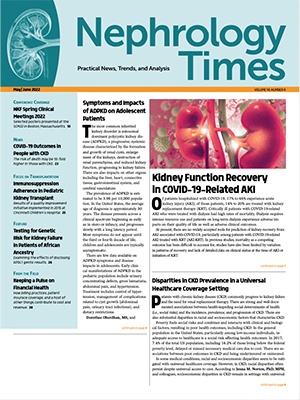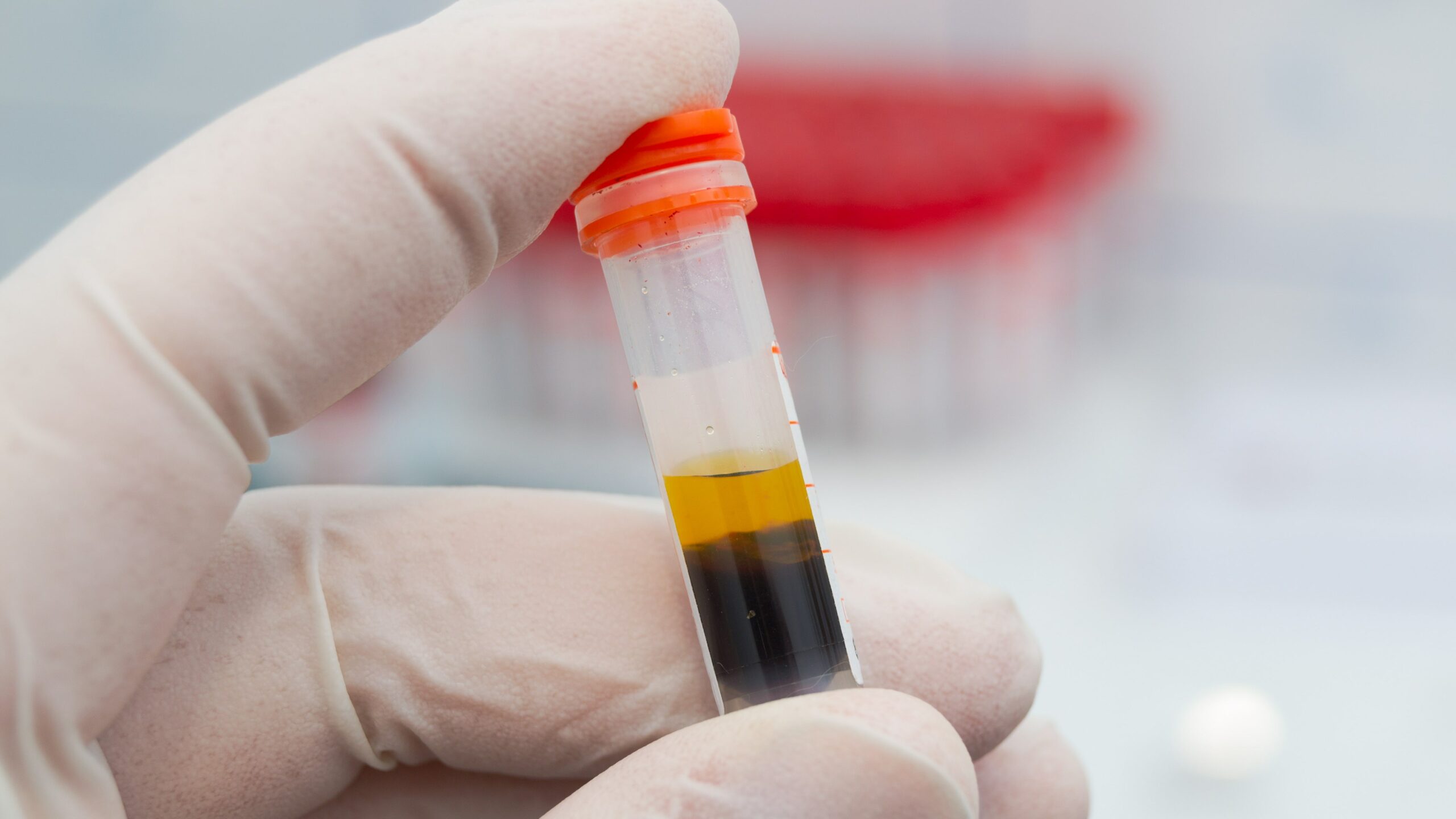
The most common inherited kidney disorder is autosomal dominant polycystic kidney disease (ADPKD), a progressive, systemic disease characterized by the formation and growth of renal cysts, enlargement of the kidneys, destruction of renal parenchyma, and reduced kidney function, progressing to kidney failure. There are also impacts on other organs including the liver, heart, connective tissue, gastrointestinal system, and cerebral vasculature.
The prevalence of ADPKD is estimated to be 3.96 per 10,000 population. In the United States, the average age of diagnosis is approximately 30 years. The disease presents across a clinical spectrum beginning as early as in utero or infancy, and progresses slowly with a long latency period. Most symptoms do not appear until the third or fourth decade of life; children and adolescents are typically asymptomatic.
There are few data available on ADPKD symptoms and disease impacts in adolescents. Early clinical manifestations of ADPKD in the pediatric population include urinary concentrating defects, gross hematuria, abdominal pain, and hypertension. Treatment includes control of hypertension, management of complications related to cyst growth (abdominal pain, urinary tract infections), and dietary restrictions.
Dorothee Oberdhan, MS, and colleagues conducted an observational, qualitative study to examine the burden of disease in adolescents with ADPKD, including symptoms, impact on daily life, and emotional and social issues and concerns. Results of the study were reported online in Kidney Medicine [doi:10.1016/j.xkme.2022.100415].
Eligible participants were 12 to 17 years of age with a diagnosis of ADPKD or under the care of a physician for suspected ADPKD. Semi-structured interviews were conducted in 13 countries in Asia, Europe, North America, and South America to assess personal experiences with symptoms and physical, social, and emotional impacts of ADPKD. The interviews were transcribed and coded to identify conceptual themes.
A total of 33 adolescents in the 13 countries participated in the interviews. Mean age of the participants was 14.6 years, 42.4% were female, and 90.9% indicated a family history of ADPKD.
Symptoms
Pain and urinary issues were the most frequently reported symptom. Twenty-one participants (63.6%) reported some type of pain attributed to ADPKD. Nine of the participants (27.3%) reported an ache, hurt, or pain in the back, and six (18.2%) reported kidney pain. Others described pain as discomfort, dull pain, or a feeling of pressure or heavy kidneys. One participants said, “I was just sitting and I felt the pain.”
Most of the pain was described as mild to moderate; five patients reported intense pain due to rupture of a cyst or infection. One said, “They [kidneys] hurt so bad I could not get out of bed.” Pain frequency ranged from seldom (1 or 2 episodes in a 6-month period) to daily. The duration of most pain episodes was short, lasting from seconds to minutes; however, some episodes lasted 15 minutes or more. Three participants (9.1%) reported headaches they attributed to ADPKD-related hypertension.
Ten participants (30.3%) reported a symptom of fullness, described as feeling full quickly when eating, not feeling hungry at all, or feeling full despite not having eaten in a long time. Approximately half of the participants reporting fullness experienced the feeling daily or several times a week.
Some type of urinary symptom was reported by 17 participants (51.5%); the most common was urinary urgency (n=10; 30.3%). Some participants reported experiencing urinary urgency on a daily basis. Three (9.1%) said it interrupted their sleep, with awakenings ranging from one or two to more than five times per night.
Disease Impacts
Seven participants (21.2%) reported no impact of ADPKD on their daily life. Ten (30.3%) said that, based on advice from their doctor or because they experienced pain or discomfort during physical activity, they avoided sports. In addition, six participants (18.2%) said they had missed school because of ADPKD. Some also said they felt uncomfortable at school due to the need to urinate frequently. Seven participants (21.2%) said they were bothered or impacted by dietary limitations, particularly the need for reduced salt intake and increased water intake.
Social impacts were also mentioned. Six participants (18.2%) reported not being able or willing to engage in some activities with friends; reasons included the desire to keep their condition secret, avoid being teased, or avoid the feeling of being different. One participant said, “You can’t really talk about it with anybody.”
Most of the participants said they had adapted to living with a progressive, chronic disease. Some said they wanted to see themselves as normal and did not want to think about having the disease. Some participants reported feeling nervous, frustrated, sad, or worried about the disease and their future. Many were feared deterioration in their kidney health and the resulting consequences. Seven said they were concerned about having children due to the hereditary risk for ADPKD.
In general, the participants did not experience emotional concerns on a daily basis. Some said that receiving medical checkups or other medical care sparked their feelings of worry or concern about their disease.
Five participants in the United Kingdom participated in cognitive debriefing interviews (London, Manchester, and Huddersfield). Mean age was 13.6 years, 40% were female, all were White, and 80% indicated a family history of ADPKD. The interviews confirmed the concepts gathered in the concept elicitation interviews, including those related to pain, tiredness, urinary frequency and urgency, as well as impacts of daily activities and emotional impacts.
Limitations to the study included the small sample size, the possibility of selection bias, and the inability to conduct focus groups with participants due to a lack of parental or guardian consent.
In summary, the authors said, “Adolescents with ADPKD exhibit a wide diversity of symptoms and disease impacts. Contrary to common perception, a substantial proportion of adolescents with ADPKD experience pain and urinary symptoms, as well as social and emotional impacts. Overall, the experience of the disease and its symptoms was very similar to that of adult patients, indicating that the impact of ADPKD is felt earlier than commonly throught to be the case, especially in adolescents with rapidly progressing disease. These qualitative findings provide a foundation for further research and may help the medical community to better address the health and emotional needs of adolescents with ADPKD, who have a lifetime of challenges ahead of them.”
The study was funded by Otsuka Pharmaceutical Development & Commercialization, Inc.
Takeaway Points
- Researchers reported results of an observational, qualitative study to examine the symptoms and disease impacts in adolescents with autosomal dominant polycystic kidney disease (ADPKD).
- Sixty-four percent of participants reported symptoms that included pain, abnormal feelings of fullness, and urinary frequency and urgency.
- Disease impacts reported included avoiding sports and physical activity, missing school and social activities, and feeling worried, sad, or frustrated about the disease.







 © 2025 Mashup Media, LLC, a Formedics Property. All Rights Reserved.
© 2025 Mashup Media, LLC, a Formedics Property. All Rights Reserved.